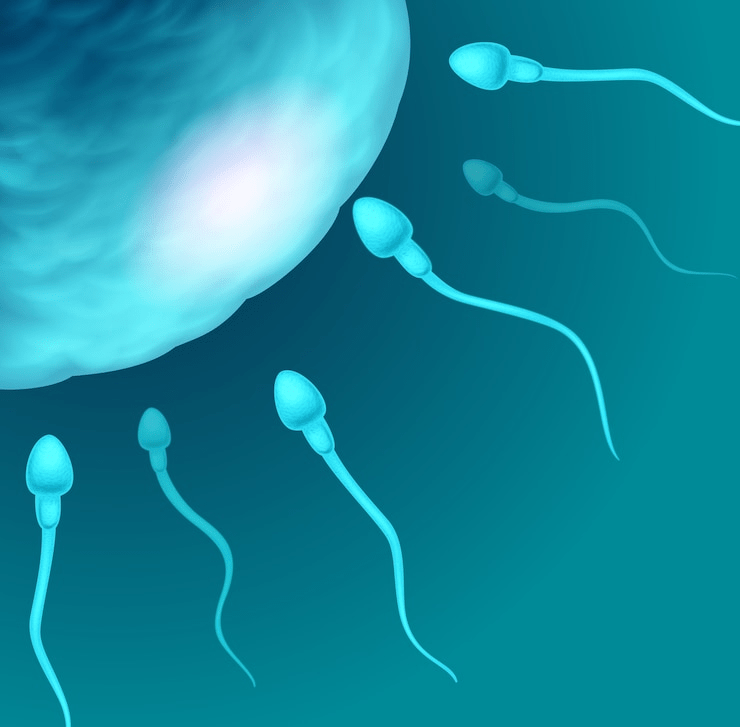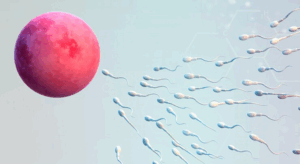
Prolistem® at the ESHRE 41th – Paris
We are proud to have participated in the 41st Annual ESHRE Conference in Paris, a premier international event where the global reproductive medicine community gathers

Infertility is a deeply personal and often challenging issue faced by millions of couples worldwide. Among men, one of the most severe forms of infertility is azoospermia—a condition in which a man’s semen contains no sperm. This condition affects around 1% of all men and about 10-15% of infertile men. While the diagnosis can be disheartening, understanding the types of azoospermia, their causes, and the available treatments can help individuals make informed decisions and seek the right medical help.
In this detailed guide, we’ll explore:
What is azoospermia?
The types of azoospermia
Causes and symptoms
Diagnosis and treatment options
Lifestyle and fertility tips
Let’s dive in.
Azoospermia is a medical condition where a man’s ejaculate (semen) contains no sperm. This means that during ejaculation, there are no sperm cells released to potentially fertilize an egg. Since sperm is essential for natural conception, azoospermia leads to male infertility if left untreated.
It’s important to note that azoospermia doesn’t mean a man produces no semen; it means his semen lacks sperm.
There are two primary types of azoospermia, each with distinct causes and treatments:
Obstructive azoospermia occurs when sperm production is normal, but there is a physical blockage in the reproductive tract that prevents sperm from entering the semen. The testicles may be producing healthy sperm, but the sperm can’t be released due to an obstruction.
Congenital absence of the vas deferens (common in men with cystic fibrosis)
Scarring or injury from surgery or infections
Vasectomy (a surgical procedure for male sterilization)
Inflammation of the epididymis or prostate
Ejaculatory duct obstruction
Normal testicular size and hormone levels
Normal secondary sexual characteristics
Ultrasound or MRI to locate blockages
Testicular biopsy to confirm sperm production
Surgical procedures to remove the blockage or repair the ducts
Sperm retrieval through techniques like:
PESA (Percutaneous Epididymal Sperm Aspiration)
TESE (Testicular Sperm Extraction)
Use of retrieved sperm for IVF (In Vitro Fertilization) or ICSI (Intracytoplasmic Sperm Injection)
Non-obstructive azoospermia is caused by impaired or absent sperm production in the testes. This is generally more difficult to treat than obstructive azoospermia because the issue lies in the testicles’ ability to generate sperm.
Genetic disorders (e.g., Klinefelter syndrome, Y chromosome microdeletions)
Hormonal imbalances (low levels of FSH, LH, or testosterone)
History of radiation or chemotherapy
Undescended testicles (cryptorchidism)
Severe varicocele (enlarged veins in the scrotum)
Testicular torsion or trauma
Blood tests to check hormone levels (FSH, LH, testosterone)
Genetic testing
Testicular ultrasound
Testicular biopsy to check for “focal spermatogenesis” (areas with sperm production)
Hormone therapy to stimulate sperm production (if hormone-related)
Surgery to correct varicocele or retrieve sperm
Micro-TESE (Microsurgical Testicular Sperm Extraction) for sperm retrieval
IVF/ICSI with retrieved sperm
Sperm donation or adoption if no sperm is found
| Feature | Obstructive Azoospermia | Non-Obstructive Azoospermia |
|---|---|---|
| Sperm production | Normal | Absent or very low |
| Cause | Physical blockage | Hormonal or testicular failure |
| Testicular size | Normal | Often reduced |
| Hormone levels | Usually normal | Often abnormal (e.g., high FSH) |
| Treatment success | High with surgery | Variable, depending on the cause |
| Sperm retrieval | Often successful | Less predictable |
Understanding the types of azoospermia is crucial for selecting the right course of action. A thorough medical evaluation helps differentiate between the two.
Diagnosing azoospermia involves several steps:
This is the first test done. A man provides a semen sample, which is examined under a microscope. If no sperm are found, it’s repeated after a few weeks to confirm.
Hormonal blood tests can reveal if the issue is due to low testosterone or high FSH/LH, suggesting problems with sperm production.
Some genetic abnormalities cause non-obstructive azoospermia. Common tests include karyotyping and Y-chromosome microdeletion testing.
This imaging test helps check for structural issues such as varicocele or blockages.
A small sample of testicular tissue is removed and examined to see if sperm production is occurring. It’s especially useful in determining the types of azoospermia.
Microsurgery: Procedures like vasoepididymostomy can remove or bypass blockages.
Sperm Retrieval Techniques: Useful when surgery isn’t possible or when planning for IVF/ICSI.
Assisted Reproductive Techniques (ART): IVF and ICSI allow fertilization using retrieved sperm.
Hormonal Therapy: Useful in treating hypogonadotropic hypogonadism (a hormone-related condition).
Varicocele Repair: In men with NOA and a varicocele, surgery can sometimes restore sperm production.
Micro-TESE: A highly precise sperm retrieval procedure used in men with NOA.
Donor Sperm or Adoption: Considered when no sperm can be found or treatments fail.
The possibility of curing azoospermia depends on the type of azoospermia and its cause.
Obstructive Azoospermia has a higher chance of treatment success, especially if the obstruction is surgically reversible.
Non-obstructive Azoospermia may be partially treatable if some sperm production exists or the cause is hormonal.
Even in the most challenging cases, assisted reproductive technologies offer hope.
Men diagnosed with azoospermia often experience a range of emotions—shock, denial, guilt, or sadness. It’s important to address these feelings and seek support:
Counseling or therapy
Support groups or online forums
Open communication with partners
Mental health plays a key role in coping with the diagnosis and moving forward with treatment or alternative family-building methods.
While not all forms of azoospermia are preventable, maintaining a healthy lifestyle can promote better reproductive health:
Avoid smoking, excessive alcohol, and recreational drugs
Maintain a healthy weight and exercise regularly
Avoid heat exposure to the testicles (e.g., hot tubs, laptops on lap)
Limit exposure to environmental toxins and chemicals
Eat a balanced diet rich in antioxidants
These habits won’t cure azoospermia, but they can improve overall sperm health in cases where some production exists.
Yes, depending on the type and cause. Many men with azoospermia have biological children using ART methods like ICSI or sperm retrieval. Others may opt for sperm donation or adoption.
It can be. Some cases of non-obstructive azoospermia are due to genetic conditions like Klinefelter syndrome or Y-chromosome microdeletions.
Obstructive azoospermia is often reversible through surgery. Non-obstructive azoospermia may be partially reversible if due to hormonal imbalances.
It affects about 1% of all men and 10-15% of infertile men.
No. Men with azoospermia typically have normal libido, erections, and ejaculation. The issue lies in the absence of sperm in the semen.
Azoospermia may seem like a daunting diagnosis, but understanding the types of azoospermia is the first step toward effective treatment. Whether obstructive or non-obstructive, many causes of azoospermia are manageable or treatable through modern medicine and assisted reproductive technologies.
If you or someone you love is facing azoospermia, don’t lose hope. With the right evaluation, treatment, and support, building a family is still very much a possibility.

We are proud to have participated in the 41st Annual ESHRE Conference in Paris, a premier international event where the global reproductive medicine community gathers

Introduction: A New Era of Hope for Male Infertility The promising cure for azoospermia 2025 is redefining the future of male fertility. As medical science
Prolistem, a patented formula, has not been evaluated by the Food and Drug Administration. This product is not intended to diagnose, treat, cure, or prevent any disease.
PROLISTEM® is a Patented Formula
Copyright © 2025 Prolistem®